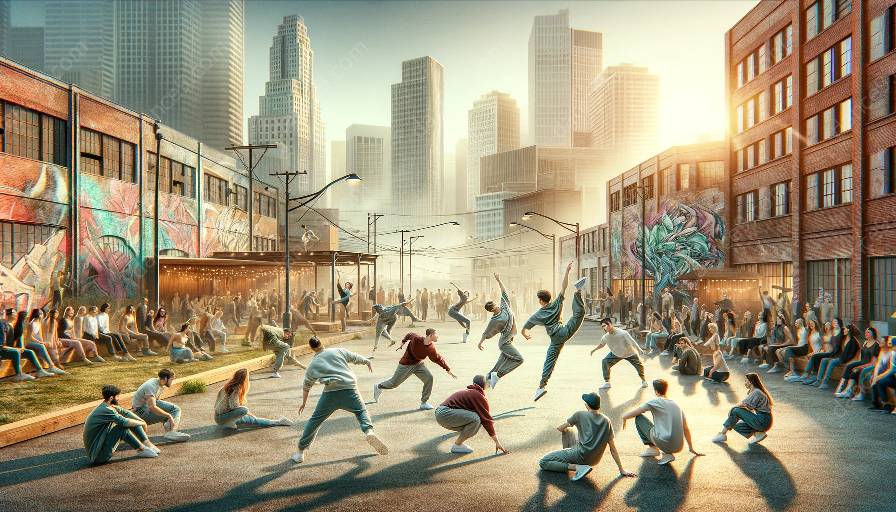Contemporary dance is a dynamic and expressive art form that embodies the fusion of improvisation and storytelling. This article delves into the intricate connections between improvisation and storytelling in contemporary dance, exploring the significance of contemporary dance improvisation and its role in influencing storytelling in dance. Additionally, it examines the ways in which contemporary dance incorporates improvisation as a powerful means of storytelling.
The Art of Contemporary Dance
Contemporary dance is a versatile and constantly evolving dance genre that emphasizes creativity, individuality, and expressive movement. Unlike traditional ballet or modern dance, contemporary dance places a strong emphasis on conveying emotions, narratives, and personal experiences through movement. It serves as a platform for dancers to explore and express their innermost thoughts and feelings, often pushing the boundaries of conventional dance techniques.
Contemporary Dance Improvisation
Improvisation plays a pivotal role in contemporary dance, allowing dancers to explore new movements and express themselves in a spontaneous and unrestrained manner. In contemporary dance, improvisation serves as a catalyst for self-discovery and creative expression. It enables dancers to tap into their emotions and instincts, ultimately shaping their unique dance narratives. Through improvisation, dancers can communicate powerful stories that are deeply personal and authentic.
The Power of Storytelling
Storytelling lies at the heart of contemporary dance, enabling dancers to convey profound narratives and evoke emotional responses from audiences. Whether through abstract or narrative-based choreography, contemporary dance has the ability to communicate a range of stories, themes, and experiences. Storytelling in dance is a collaborative process that encompasses the physicality of movement, the emotive expressions of the dancers, and the visual and auditory elements of the performance.
Connections Between Improvisation and Storytelling
The connections between improvisation and storytelling in contemporary dance are intricate and symbiotic. Improvisation serves as a powerful tool for generating authentic and compelling stories within the realm of contemporary dance. By allowing dancers to explore spontaneous movements and emotional impulses, improvisation brings forth genuine narratives that resonate with audiences on a profound level. In turn, storytelling influences improvisation by providing a framework for expressing complex emotions and themes through movement.
Contemporary dance often blurs the lines between improvisation and choreographed sequences, seamlessly integrating both elements to create a rich tapestry of storytelling. Improvisation enhances the visceral and raw quality of storytelling in contemporary dance, offering a channel for dancers to connect with their innermost experiences and communicate them through movement. The spontaneity of improvisation infuses dance narratives with an authentic, unscripted resonance, inviting audiences to engage with the raw emotions and personal journeys expressed by the dancers.
Artistic Freedom and Creativity
Contemporary dance improvisation fosters artistic freedom and creativity, allowing dancers to break away from traditional constraints and explore unconventional modes of expression. This artistic liberty enables dancers to delve into their inherent creativity, unearthing narratives that are deeply meaningful and evocative. By intertwining improvisation and storytelling, contemporary dance amplifies the power of individual expression and challenges the boundaries of conventional dance forms.
Embracing Vulnerability and Authenticity
The marriage of improvisation and storytelling in contemporary dance encourages dancers to embrace vulnerability and authenticity in their performances. Through improvisation, dancers immerse themselves in a state of vulnerability, channeling their raw emotions and uninhibited movements to convey genuine narratives. This vulnerability lends an aura of authenticity to their storytelling, creating an emotional resonance that captivates audiences and fosters deep connections between the performers and spectators.
Conclusion
The connections between improvisation and storytelling in contemporary dance underscore the transformative and evocative nature of this art form. Through the seamless integration of improvisation and storytelling, contemporary dance serves as a conduit for deeply personal and compelling narratives, inviting audiences to embark on a journey of emotional exploration and introspection. By embracing improvisation as a powerful vehicle for storytelling, contemporary dance continues to push the boundaries of artistic expression and redefine the art of dance storytelling.




























